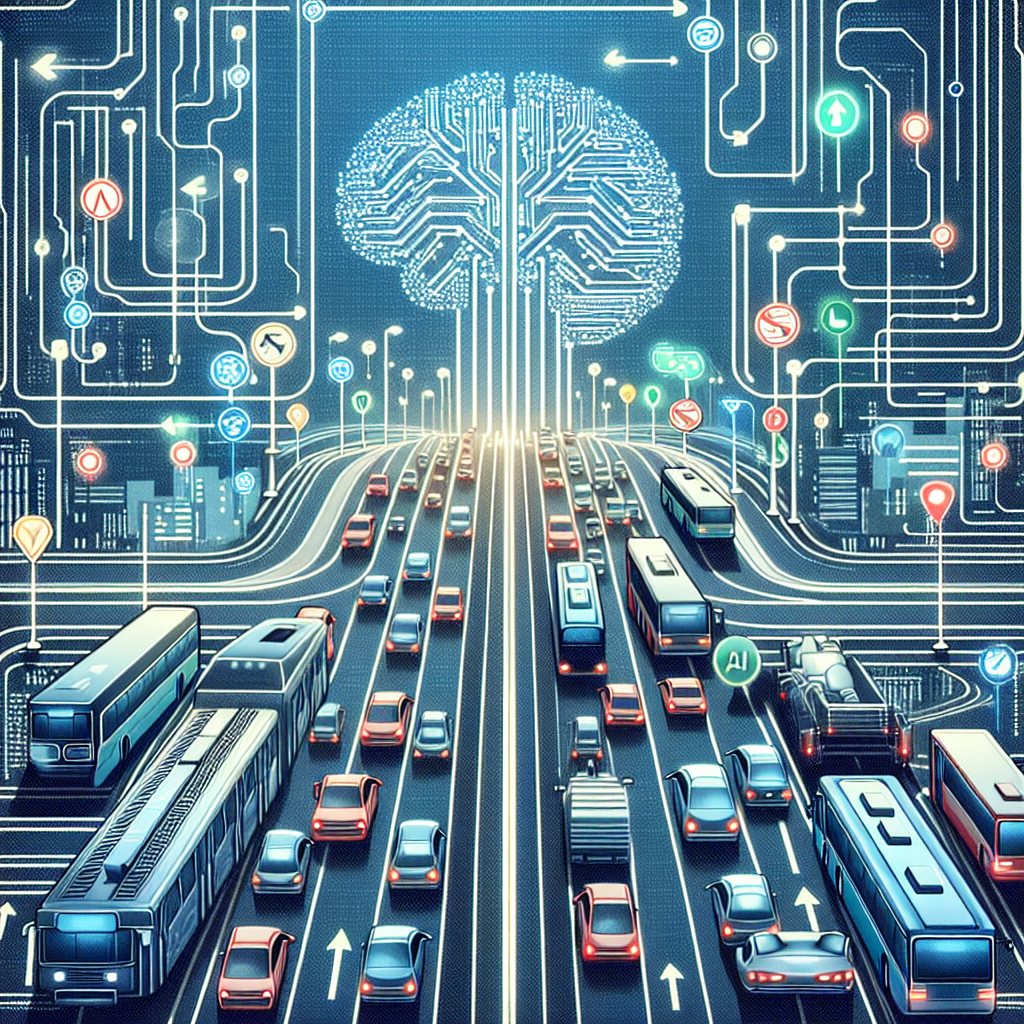Artificial Intelligence (AI) is revolutionizing various industries, and transportation is no exception. One of the key benefits of AI in transportation is its ability to facilitate real-time decision making. By leveraging AI technologies, transportation companies can optimize their operations, improve efficiency, and enhance customer experience. In this article, we will explore the benefits of AI for real-time decision making in transportation and discuss how it is transforming the industry.
1. Improved Traffic Management
Traffic congestion is a major challenge for transportation companies, leading to delays, increased fuel consumption, and higher operating costs. AI-powered traffic management systems can analyze real-time data from various sources, such as traffic cameras, sensors, and GPS devices, to optimize traffic flow and reduce congestion. By predicting traffic patterns and identifying bottlenecks, AI can help transportation companies make informed decisions to improve the efficiency of their operations.
2. Enhanced Route Optimization
AI algorithms can analyze historical data, weather conditions, and traffic patterns to optimize route planning in real-time. By considering multiple factors, such as road closures, accidents, and construction, AI can recommend the most efficient routes for drivers to follow. This not only helps reduce travel time but also minimizes fuel consumption and emissions, leading to cost savings and environmental benefits.
3. Predictive Maintenance
AI can predict when maintenance is needed for vehicles and infrastructure, reducing the risk of breakdowns and improving safety. By analyzing data from sensors and monitoring systems, AI can detect potential issues before they escalate, allowing transportation companies to schedule maintenance proactively. This predictive approach minimizes downtime, extends the lifespan of assets, and ensures the reliability of transportation services.
4. Real-Time Demand Forecasting
AI can analyze historical data, customer behavior, and external factors to predict demand for transportation services in real-time. By understanding passenger preferences and trends, transportation companies can adjust their services accordingly to meet customer needs. This proactive approach ensures that resources are allocated efficiently, leading to improved service quality and customer satisfaction.
5. Dynamic Pricing
AI algorithms can analyze market conditions, competitor pricing, and customer preferences to optimize pricing strategies in real-time. By adjusting prices based on demand, availability, and other factors, transportation companies can maximize revenue and profitability. Dynamic pricing also allows companies to offer discounts during off-peak hours or adjust prices during peak times to incentivize customers and balance supply and demand.
6. Enhanced Safety and Security
AI-powered systems can monitor traffic conditions, detect anomalies, and alert authorities in real-time to improve safety and security in transportation. By analyzing data from cameras, sensors, and other sources, AI can identify potential risks, such as collisions, speeding, or unauthorized access, and take preventive actions. This proactive approach enhances the overall safety of passengers, drivers, and infrastructure, reducing the likelihood of accidents and incidents.
7. Personalized Customer Experience
AI can analyze customer data, preferences, and behavior to personalize transportation services in real-time. By offering tailored recommendations, notifications, and promotions, transportation companies can enhance the customer experience and build loyalty. AI-powered chatbots and virtual assistants can also provide real-time assistance and support to passengers, improving communication and satisfaction.
8. Environmental Sustainability
AI can help transportation companies reduce their environmental impact by optimizing routes, minimizing fuel consumption, and promoting eco-friendly practices. By analyzing emissions data, energy usage, and other environmental factors, AI can recommend sustainable solutions to reduce carbon footprint and promote green initiatives. This proactive approach aligns with the growing demand for eco-friendly transportation options and contributes to a more sustainable future.
In conclusion, AI offers numerous benefits for real-time decision making in transportation, including improved traffic management, enhanced route optimization, predictive maintenance, real-time demand forecasting, dynamic pricing, enhanced safety and security, personalized customer experience, and environmental sustainability. By leveraging AI technologies, transportation companies can optimize their operations, improve efficiency, and deliver high-quality services to customers. As AI continues to evolve and advance, its impact on transportation will only grow, shaping the future of mobility and transforming the way we travel.
FAQs:
Q: How can AI help reduce traffic congestion?
A: AI-powered traffic management systems can analyze real-time data to optimize traffic flow, predict traffic patterns, and identify bottlenecks, leading to reduced congestion and improved traffic management.
Q: How does AI enhance route optimization in transportation?
A: AI algorithms can analyze historical data, weather conditions, and traffic patterns to recommend the most efficient routes for drivers, reducing travel time, fuel consumption, and emissions.
Q: What is predictive maintenance, and how can AI support it?
A: Predictive maintenance uses AI to predict when maintenance is needed for vehicles and infrastructure, reducing the risk of breakdowns, improving safety, and minimizing downtime.
Q: How does AI enable real-time demand forecasting in transportation?
A: AI analyzes historical data, customer behavior, and external factors to predict demand for transportation services in real-time, allowing companies to adjust their services and resources accordingly.
Q: How can AI help enhance safety and security in transportation?
A: AI-powered systems can monitor traffic conditions, detect anomalies, and alert authorities in real-time to improve safety and security, reducing the likelihood of accidents and incidents.

